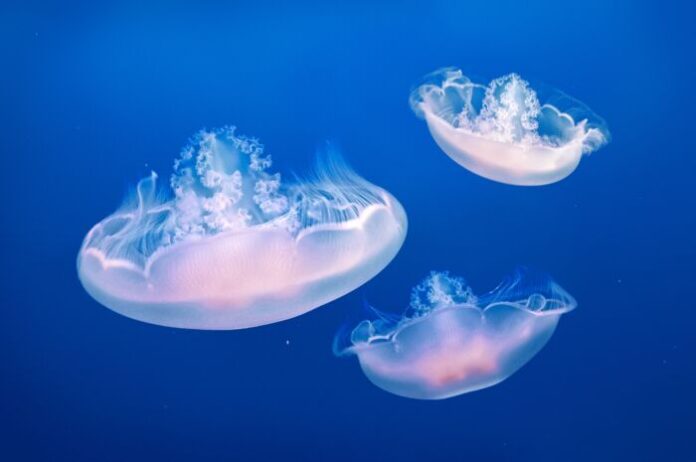
Traditional dish in China and various countries of Southeast Asia, jellyfish in Europe are not yet authorized for food use. Still, they are a source of protein, low in calories and fat, contain precious elements such as amino acids, magnesium and potassium, have anti-inflammatory and antioxidant properties. And they could also be greedy, suggest the chefs involved in the book “European Jellyfish – First recipes based on Western-style jellyfish”, published by Cnr Edizioni – Communication Unit for relations with the public and edited by Antonella Leone of the Institute of Production Sciences food (Ispa) of the National Research Council of Lecce as part of the European project “GoJelly”.
The book – available as a flipbook and downloadable for free in Italian and English from the CNR website – is presented to the public on Monday 29 March with an online event broadcast live starting at 5 pm on the Facebook and YouTube channels of the Communication and Relations Unit with the public: researchers and chefs will guide the public towards a new perception of these marine creatures, from hated enemies of all bathers to potential resource.
“We must immediately point out that the food use of jellyfish in Italy and Europe is not yet authorized at the time of publication of this book. The EU regulation on novel foods in fact requires an authorization or notification from the European Commission, for the placing on the market within the Union of a traditional food from a third country “, explains Antonella Leone (Cnr-Ispa), a committed researcher in the project for Italy.
“New foods” or new food ingredients must not be harmful to public health. “After the evaluation of the application by the Commission and the favorable opinion of EFSA (European Food Safety Authority), the jellyfish can be marketed and consumed. The placing on the market within the Union could be facilitated where it has been shown to be consumed for at least 25 years as part of the usual diet of a significant number of people, in at least one third country “. As regards jellyfish, applicants should therefore be able to opt for a quicker and simpler procedure as long as no duly substantiated safety objections are raised.
“For years, through the Go Jelly project funded under the Horizon 2020 program, the international scientific community has been engaged in the study of jellyfish as a sustainable resource,” continues Leone. “As Cnr-Ispa, in particular, we investigate the biochemical, nutraceutical and nutritional characteristics of Mediterranean and European jellyfish with the aim of promoting their use in the food sector, also studying new and healthier food processes that eliminate the use of compounds toxic like the alum present in the traditional Asian process “.
Today, with the seas less and less full of fish and the increasing presence of jellyfish in all the oceans and seas of the planet – due in part to the overexploitation of fish populations, and in part to factors such as the increase in water temperatures and the ‘acidification of the oceans – there is an opportunity to use them as “novel food” also in the West: “In the Far East these animals have been used for over 2,000 years, with a significant impact also on the economy. With a world population growing at an exponential rate – against a much slower increase in food production – identifying new and sustainable food resources is, in fact, an inevitable challenge ”, adds the researcher.
From simple marinated or carpaccio jellyfish to the most sophisticated dish of jellyfish with false caviar, from soups to paired with pasta or noodles, the event of March 29 will be an opportunity to illustrate some of the original recipes proposed in the book, which make it clear how the inclusion of jellyfish in our diet can also be a winner in terms of taste. Among the objectives of the “GoJelly” project, also the possibility of using the enormous quantities of biomass that jellyfish provide in other sectors: for example in the cosmetic sector – thanks to the quantity of collagen contained in these organisms – or for the production of filters for microplastics for the treatment of waste water, up to their use for the production of “bio” fertilizers or feed.






































